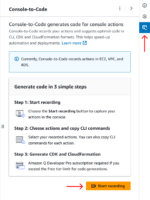
The adoption of Infrastructure as Code (IaC) has grown rapidly over the past few years. Previously, IT teams had to constantly provision cloud resources to run applications efficiently, being mindful of over-provisioning and wasting resources. This manual approach was a relic of the pre-cloud era that mimicked in-house data center provisioning, and doesn’t match the speed or fluidity of how applications are developed and delivered today. As a result, many teams experienced slowed deployments, and in some cases, introduced human errors and convoluted audit trails into their application development and delivery process.
As time progressed and more teams embraced DevOps, the idea of strict centralized management of cloud infrastructure seemed to move further and further from reach. If IT is a bottleneck, application teams work around them, instead of working with them. DevOps is an important shift, as it breaks down organizational silos and accelerates innovation. With the rise of DevOps, together with the need for agile infrastructure management, solutions like Kubernetes, Terraform, and CloudFormation have emerged and transformed the way applications and infrastructure are delivered. These tools allow the application teams and IT teams to work together to programmatically provision the infrastructure necessary to run applications, as well as automate application deployments in a transparent and repeatable way that aligns closely with modern cloud native software development practices.
Codifying infrastructure has helped organizations standardize their environments, but continuous IaC can take this a step further and deliver both increased speed and safety to deployments. Let’s take a closer look at why organizations should adopt continuous IaC and its impact on speed and security.
The need for continuous Infrastructure as Code
Companies are adopting IaC to leverage automation to minimize human error and provision infrastructure and applications faster. On top of that, codified deployments can provide a clear audit trail and introduce security during the development process, as well. This is possible because IaC, when treated like other forms of code, can ensure a consistent, repeatable, testable path to production. However, while traditional infrastructure was centrally managed and provisioned by IT teams, thus providing a very small sphere of control, IaC distributes more control into the hands of developers. This means that developers are now responsible for more code than ever, as well as the security of the objects that code creates.
Luckily, organizations can get a handle on this process through the continuous delivery of IaC. These are a set of best practices and principles — agreed upon and shared amongst development, cloud, and security teams — that allows organizations to deliver digital systems quickly and safely. When infrastructure configurations become code, environment changes can be tracked, tested, and reproduced in a similar way to application source code. Enforcing strong configuration standards, therefore, is a crucial aspect of secure software delivery. Shockingly, this practice isn’t always written in stone — 56% of organizations experienced a misconfiguration or known unpatched vulnerability incident involving their cloud native applications.
By adopting continuous IaC best practices, organizations can reduce vulnerabilities before their infrastructure and applications are deployed, and also reduce their exposure to misconfigurations that creep into production, while pushing new features to users faster and lowering the cost of software delivery. This level of agility, combined with strong security, enables organizations to deploy secure software faster than ever.
Combining speed and security at scale
Many organizations believe there’s a tradeoff between speed and safety, but this isn’t always the case. In fact, there are some direct safety benefits that speed can bring to modern applications. Strong safeguards can also enable faster deployments. Rather than a tradeoff, combining speed and security can be a net positive for many organizations.
For example, the latest Verizon Data Breach Incident Report shows that basic web application attacks, system intrusion, and errors are three of the top patterns in breaches. These are all patterns that can involve the discovery and use of misconfigurations, vulnerabilities and stolen credentials. The ability to quickly roll out fixes is dependent on an efficient software deployment process. Can a misconfigured service have the proper configuration applied and redeployed in minutes, or will it require a human to login to a web console and manually change settings? Can credentials be rotated quickly, or will a human need to update a password database, login to services, and reconfigure them with the passwords? Speed matters in today’s rapidly evolving threat landscape.
On the other hand, safety can also enable speed. Without proper guardrails in place around infrastructure management, even small changes require manual reviews, add stress for engineers, and risk becoming bottlenecks for deployments. With the right safeguards for continuous IaC, organizations can quickly make changes with confidence.
While a solo engineer making infrastructure changes might seem faster, this isn’t a sustainable approach to infrastructure management. IaC enables organizations to implement a high degree of automation — through version control, automated testing, and other methods — that is repeatable and transparent. This gives engineers greater confidence that rapid infrastructure changes won’t break things or introduce risk.
Technology advances require adaptability
Technological advances continue to accelerate the rate of change in digital product markets, creating uncertainty about whether a product or feature will still be relevant by the time it reaches production. To win in this environment, the ability to rapidly bring software from idea to production based on market conditions will be a key differentiator.
While Agile practices have been improving software development for decades, infrastructure is still one of the last real barriers to rapid software delivery. Continuous IaC can eliminate slow, centrally managed, manual deployment processes and enable organizations to achieve the speed necessary to adapt their software to market demands — and simultaneously reduce security risks.
Learn more about Infrastructure as Code at KubeCon + CloudNativeCon Oct. 11-15.








